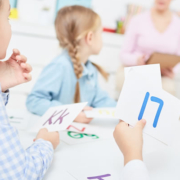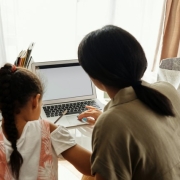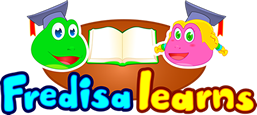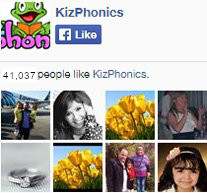Exploring Holiday Calendars for Phonics: A Year of Learning and Fun
In the realm of children's phonics education, weaving learning experiences into the tapestry of holidays can be both joyful and effective. A holiday calendar tailored for phonics education offers a creative way to infuse phonics learning with the magic of special occasions. This article delves into the world of holiday calendars, showcasing the benefits of integrating phonics activities with holidays and providing insights into creating engaging calendar experiences.
Table of Contents:
Introduction
The Power of Holiday Calendars in Phonics Education
Crafting a Yearly Calendar of Phonics Learning
Exploring Calendar Activities for January and Beyond
Fact Section: FAQs about Holiday Calendars for Phonics
Conclusion
Introduction: Bridging Learning and Celebration
Holidays are moments of joy, celebration, and family togetherness. Integrating phonics education with holiday festivities creates a dynamic fusion that not only enhances learning but also makes the educational journey more engaging and memorable. A well-crafted holiday calendar serves as a guide, leading children through phonics activities that align with the rhythm of the year.
The Power of Holiday Calendars in Phonics Education
Holiday Calendars for Phonics: By intertwining phonics activities with holidays, children experience a multifaceted approach to learning. They discover that learning is not confined to the classroom but can be woven into their daily lives, making it both meaningful and enjoyable. A holiday calendar adds structure to learning while allowing for creative exploration.
Crafting a Yearly Calendar of Phonics Learning
Creating a holiday calendar for phonics involves mapping out the entire year, aligning key phonics concepts with relevant holidays. This approach keeps learning fresh and dynamic, while also reflecting the seasonal themes that resonate with children. Here's a sample framework to consider:
1. January: New Year, New Sounds
Kickstart the year with activities focused on phonemic awareness. Explore rhyming words, initial sounds, and blending phonemes to form new words. Set phonics resolutions for the year ahead!
2. February: Love for Letters
Celebrate Valentine's Day by immersing in letter recognition. Engage in activities where children hunt for letters in love-themed words and create valentine cards with phonics messages.
3. March: Shamrocks and Sounds
Incorporate phonics games that involve sorting words based on vowel sounds. Explore the magic of long and short vowels while celebrating St. Patrick's Day.
4. April: Spring into Syllables
As spring blooms, engage in activities that focus on counting syllables in words. Use the renewal of nature as a backdrop to explore multisyllabic words.
5. May: Marvelous Mother's Day Phonics
Celebrate Mother's Day by crafting phonics-themed gifts. Build words related to motherly love and appreciation while practicing sound patterns.
6. June: Summer Sound Adventures
Embrace the arrival of summer with phonics scavenger hunts. Explore the outdoors while identifying words that begin or end with specific sounds.
7. July: Phonics Picnics and Fireworks
Combine outdoor picnics with phonics games. Engage in word-building challenges while enjoying the fireworks of sound exploration.
8. August: Exploring Endings and Beginnings
As a new school year begins, focus on word endings. Dive into activities that highlight word families and suffixes, setting the stage for vocabulary growth.
9. September: Back-to-School Phonics Adventure
Incorporate phonics into school routines. Engage in activities that emphasize letter-sound relationships, sight words, and decoding strategies.
10. October: Spooktacular Phonics Fun
Celebrate Halloween with spooky phonics adventures. Explore word patterns in eerie tales and embark on phonics-themed treasure hunts.
11. November: Thankful for Sounds
Connect phonics with gratitude during Thanksgiving. Craft word collages that represent what children are thankful for while reinforcing phonics concepts.
12. December: Sounds of the Season
Infuse phonics into holiday traditions. Create phonics-themed ornaments, explore winter-themed vocabulary, and end the year with festive phonics cheer.
Exploring Calendar Activities for January and Beyond
January: New Year, New Sounds
Kickstart the year with a burst of phonics enthusiasm. Incorporate activities that focus on strengthening phonemic awareness—the ability to hear and manipulate individual sounds within words. Here are some engaging ideas:
Rhyming Snowballs: Prepare paper snowballs with rhyming words written on them. Children toss the snowballs to one another and group the rhyming pairs they catch.
Initial Sound Icebreakers: Choose a theme related to winter or the new year. Encourage children to come up with words that start with the same sound as the theme word. For example, if the theme is "snow," words like "sled," "star," and "socks" can be suggested.
Blending Snowmen: Create cut-out snowmen with various phonemes written on them. Children combine the phonemes to build words and create "snowman words."
Fact Section: FAQs about Holiday Calendars for Phonics
Q1: Are holiday calendars suitable for all ages?
A1: Yes, holiday calendars can be adapted to different age groups. Younger children may engage in simpler activities, while older children can explore more complex phonics concepts.
Q2: Can holiday calendars be used in homeschooling?
A2: Absolutely. Homeschooling environments are ideal for incorporating holiday calendars. Tailor the activities to align with your curriculum and your child's interests.
Q3: How can educators make holiday calendars interactive?
A3: Include hands-on activities, games, crafts, and storytelling in your calendar. Engagement is key, so make the learning experiences exciting and interactive.
Q4: Are there online resources for holiday calendar templates?
A4: Yes, you can find various templates and ideas online. Customize them to suit your curriculum and the specific holidays celebrated in your region.
Q5: How can parents and educators stay consistent with calendar activities?
A5: Plan ahead and allocate specific times for calendar activities. Create a dedicated space for the calendar where children can engage in activities comfortably.
Conclusion: A Year of Phonics Learning and Celebration
As you embark on the journey of blending phonics education with holidays, you're creating a rich tapestry of learning experiences for children. Holiday calendars not only make learning more engaging but also foster a deep appreciation for the magic of language. By integrating phonics activities with holidays, parents and educators provide children with the gift of literacy wrapped in the joy of celebration.
To explore more about phonics education and discover resources that enhance learning through holidays, visit Kizphonics. With each holiday-themed activity, children unwrap the joys of phonics, nurturing their literacy skills in a festive and memorable way.











